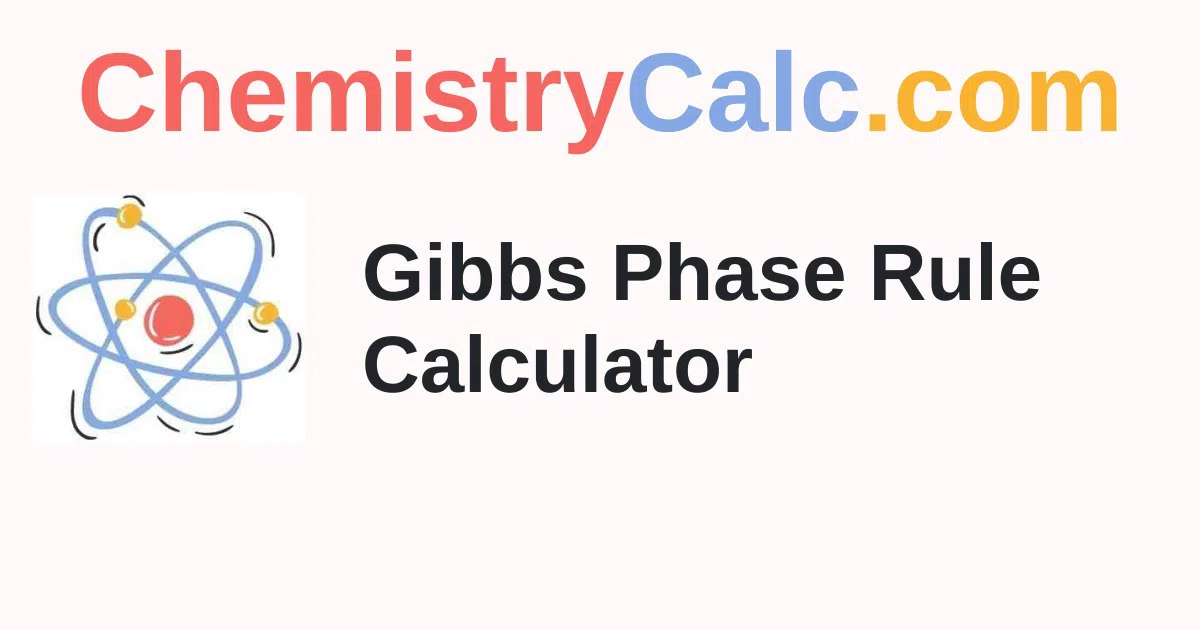Gibbs' Phase Rule Calculator
Utilize this free Gibbs Phase Rule Calculator to find the number of degrees of freedom of the phase rule in a short span of time. Simply enter number of components, number of phases and factor in the mentioned sections and click the calculate button to generate the answer in no time.
Steps to Calculate Phase Rule
Go through the simple and easy guidelines on how to measure pH value.
- Get the number of components, phases and factor details.
- Add phase to the factor.
- Subtract it from the components tio check the number of degrees of freedom.
What is Gibbs' Phase Rule? | Phase Rule Details
Gibbs phase rule equation is proposed by Josiah Willard Gibbs in the year 1875. This phase rule is based on the laws of thermodynamics and gives tge theoretical principle of characterizinf the system's chemical state. It predicts the equilibrium relations of phases and represent it as the function of physical condition like pressure and temperature.
The Gibbs phase rule equation is F = C - P + factor
Where,
F is the number of degrees of freedom
C is the number of components
P is the number of phases in the system
Factor depends on the temperature and pressure of the system
Phase Rule Details
The phase rule equation contains number of phases, number of components, and number of degrees of freedom details.
Number of Phases
A phase is a form of matter that is homogenous in chemical composition and physical properties through its volume.
Number of Components
The minimum number of chemical components needed to constitute all phases in the system is the number of components.
Number of Degrees of Freedom
The number of degrees of freedom increases with the increase of number of components and decreases number of phases in balance.
Example:
Question: Find the phase rule for the equation NH₄HCO₃(s) <-> NH₃(g) + CO₂(g) + H₂0(g).
Answer:
Given that,
NH₄HCO₃(s) <-> NH₃(g) + CO₂(g) + H₂0(g)
Number of Components C = 2
Number of Phases P = 1
Factor = 2
Number of degrees of freedom F = C - P + factor
F = 2 + 1 - 2 = 1
Therefore, the number of degrees of freedom is 1.
Seek instant help on chemistry concepts all at one place on Chemistrycalc.Com a trusted portal.
FAQ’s on Gibbs' Phase Rule Calculator
1. What is Phase Rule?
Phase rule is helpful to find the degrees of freedom in a closed physical system. Gibbs phase rule predicts the equilibrium relations of the phases and present as the function of physical conditions.
2. What are the variables in Phase Rule Equation?
The different variable of the phase rule equation si phase, hemical components, and number of degrees of freedom.
3. How to find the number of degrees of freedom using the Gibbs Phase Rule Calculator?
You have to provide the number of components, phases and factor in the calculator input fields and press the calculate button to hek the number of degrees of freedom easily.
4. What is the Phase Rule Equation?
The phase rule equation is defined as F = C - P + fator. Here, F is the number of degrees of freedom, C is the number of chemical components, P is the number of phases in the system.

